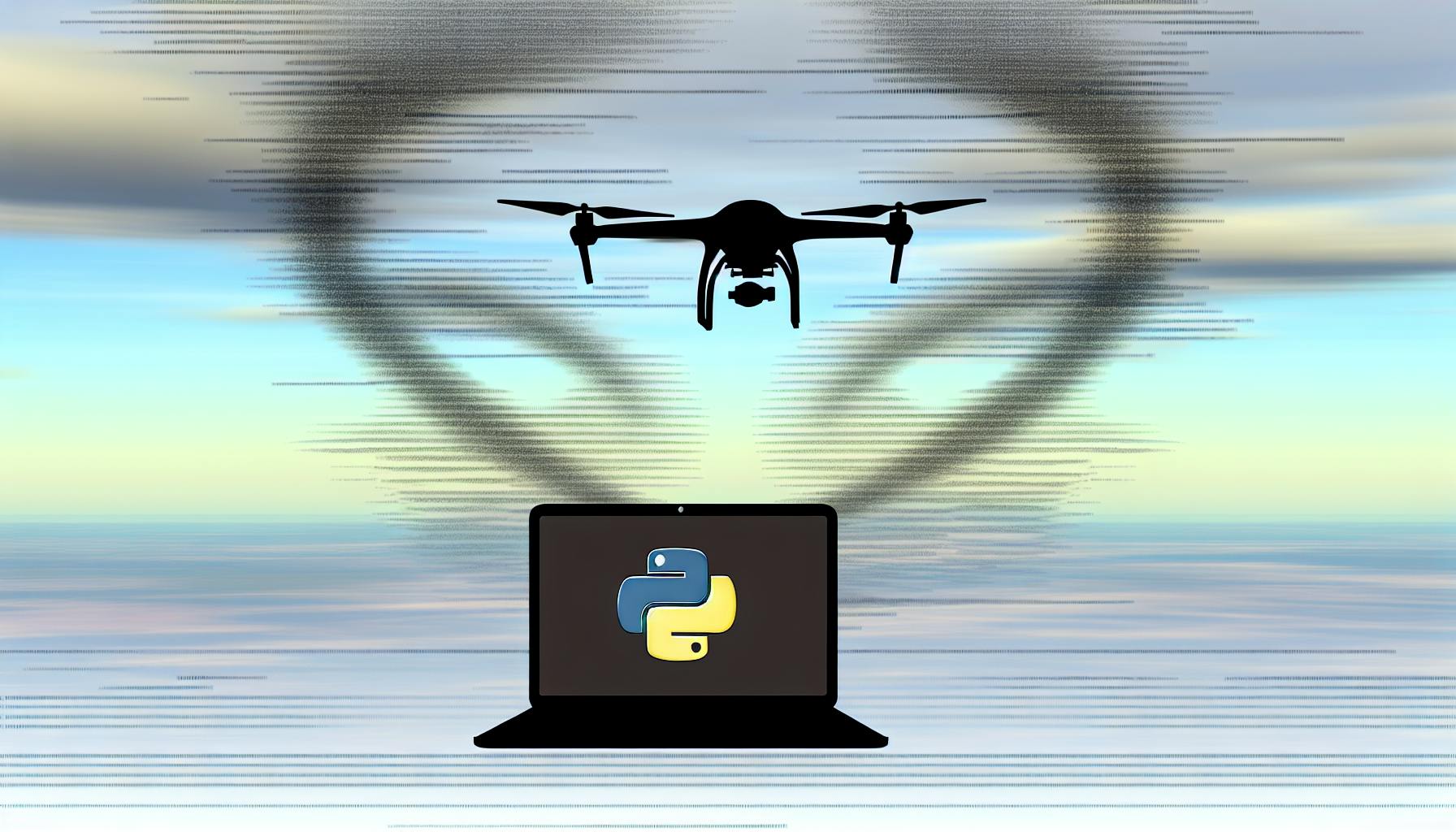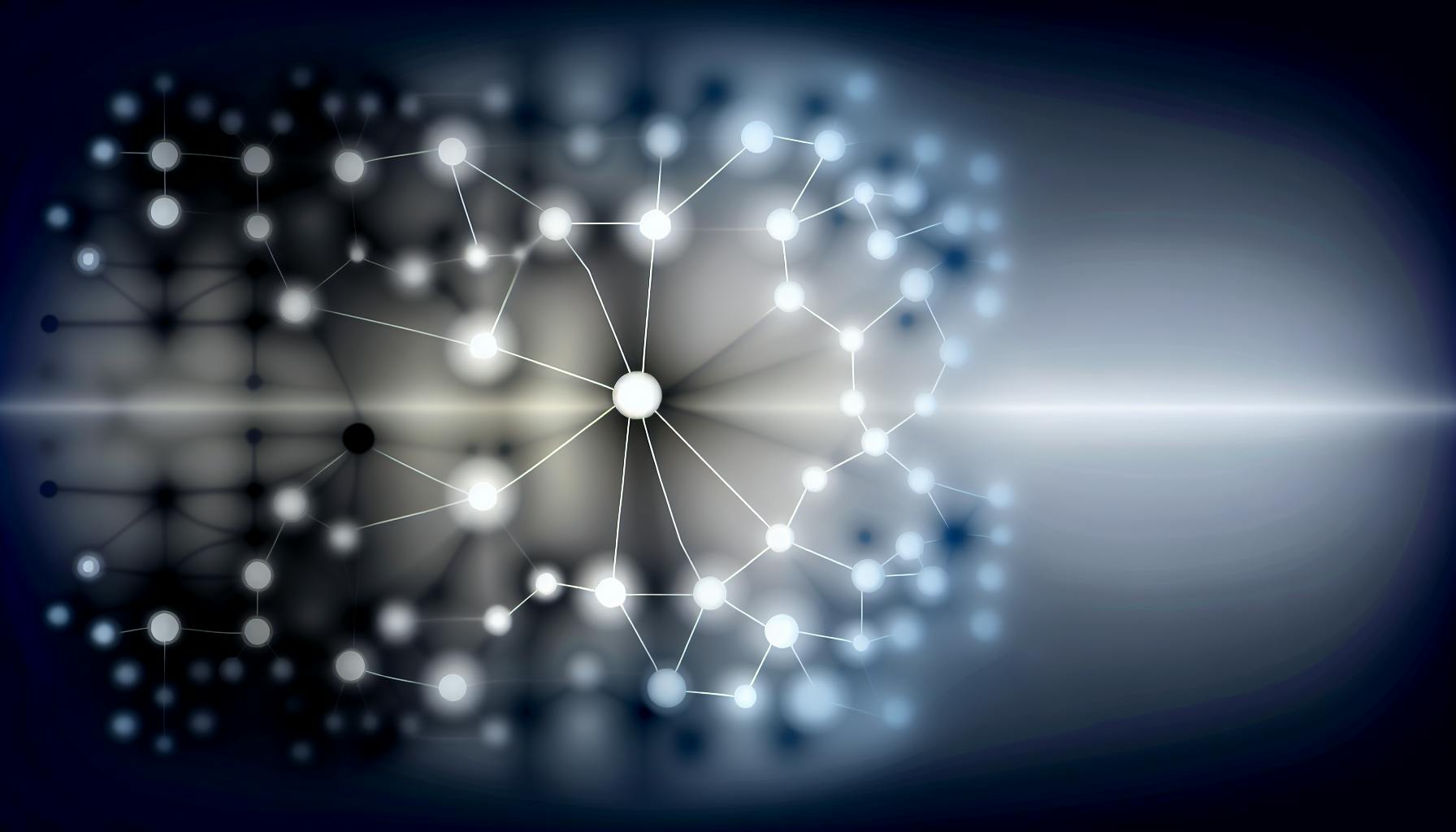Readers will likely agree that making sense of data can be challenging without the right tools and techniques.
This article promises to clearly outline the key differences between data visualization and data analytics, equipping readers with a practical understanding of how to present and interpret data for maximum impact.
You'll learn the unique purposes of each approach, see examples of effective data visualization techniques, and gain insight into educational pathways and career opportunities in this exciting field.
Introduction to Data Visualization and Analytics
Data visualization and data analytics are related but distinct processes for working with data.
Exploring Data Visualization for Beginners
Data visualization involves creating graphical representations of data in order to uncover patterns, trends, and insights. For beginners, some key principles of effective data visualization include:
- Choosing appropriate chart types based on the type of data and insights sought
- Eliminating clutter and drawing attention to the most meaningful elements
- Using color, layout, and annotations effectively to highlight key takeaways
Some common beginner data visualization types include bar charts, line graphs, scatter plots, and heat maps.
Overview of Data Analyst Visualization Tools
Data analysts use a variety of specialized tools to create impactful data visualizations. Some popular options include:
- Tableau - Drag-and-drop interface to build interactive dashboards and stories
- Power BI - Microsoft tool for building business intelligence dashboards
- Python data visualization libraries like Matplotlib and Seaborn - Flexible options for programmers
- Excel - Common starting point for basic charts and graphs
These tools help analysts transform raw data into actionable insights through techniques like drill-downs, filtering, and statistical representations.
Data Visualization vs Data Analytics: A Comparative Introduction
While data visualization focuses on graphical representation, data analytics applies statistical and algorithmic processing to derive insights. Together, they inform business intelligence and decision making.
Data visualization makes data easier for analysts to understand and share with stakeholders. Data analytics detects patterns and quantifies relationships to guide strategy. Both require an inquisitive mindset and foundational data literacy.
What is the difference between data visualization and data representation?
Data visualization and data representation serve related but distinct purposes in data analysis.
Data visualization refers to graphical representations of data that aim to uncover insights, patterns, and trends. Common data visualization types include charts, graphs, heat maps, and dashboards. Data visualizations leverage the power of human visual perception to help analysts explore and understand complex data.
In contrast, data representations communicate key findings from data analysis to stakeholders through carefully designed graphics. While data visualizations aid exploration and discovery, data representations focus on clear communication of insights already uncovered from the data.
Data representations, unlike data visualizations, are human generated using design software like Adobe Creative Suite, Canva or Piktochart. They require an analyst or designer to decide which data points and insights to include to best tell the data story. The goal is to persuade and explain rather than further analyze.
In summary, data visualization enables analysts to detect insights, while data representation allows communicating those discoveries to others. Together they form a pipeline - data visualization for internal exploration and analysis, data representation for external understanding and decision making.
What is the difference between data visualization and data analytics?
Data visualization and data analytics work hand-in-hand to help businesses make data-driven decisions. However, they serve different primary purposes:
Data Visualization
Data visualization refers to the graphical representation of information, making complex data easier to quickly comprehend. Common types of visualizations include:
- Charts (bar, pie, line, etc.)
- Heatmaps
- Histograms
- Treemaps
- Infographics
Data visualizations transform raw, unstructured data into intuitive visuals. They help identify patterns, trends, and insights that would be difficult to spot in tabular data.
Data Analytics
While visualizations present data insights, analytics focuses on deriving those insights in the first place through statistical analysis and modeling. Analytics techniques include:
- Descriptive analysis (examining historical data)
- Diagnostic analysis (determining why something happened)
- Predictive analysis (forecasting future outcomes)
- Prescriptive analysis (recommending data-driven actions)
So in summary, data visualization turns complex data into visuals to communicate insights, while data analytics uses statistical techniques to uncover those insights from data in the first place. They work together to transform raw data into presentation-ready intelligence for strategic decision making.
Why is data visualization better than presenting tables of data?
Data visualization provides a more intuitive and accessible way to identify trends, outliers, and patterns compared to just presenting raw data tables. Here are some of the key benefits:
-
Easier to digest. Charts, graphs, and other visuals allow people to grasp insights from data more quickly than poreing over spreadsheets or reports. Viewers can spot trends and anomalies at a glance.
-
More engaging and memorable. Well-designed data visualizations tap into the power of visual perception to leave a longer-lasting impact. The brain processes visuals 60,000 times faster than text.
-
Makes data analysis accessible. Data visuals open up data insights to those without statistical or analytical expertise. Audiences with varying levels of data literacy can understand the key messages.
-
Better storytelling. Data visualizations turn complex data stories into easily digestible narratives that people can quickly absorb. Visuals help connect the dots.
-
Enables faster decision making. Managers and executives can rapidly analyze market dynamics, performance indicators, and other metrics using data dashboards to make timely business decisions.
So in summary, data visualization transforms raw data into actionable insights for broader audiences. It surfaces hidden trends and equips businesses to make sharper, data-driven decisions through impactful visual stories. That's why it surpasses basic data tables for analysis and presentation.
What is the difference between data analysis and data representation?
Data analysis and data visualization, while related, serve different purposes in the data interpretation process.
Data analysis refers to the systematic examination and interpretation of data to uncover patterns, trends, and insights. It utilizes statistical techniques and algorithms to categorize, manipulate, summarize, and model data. Common data analysis methods include:
- Descriptive analysis to characterize and summarize data to see what it contains. This includes calculating measures of central tendency like mean and median or creating visual summaries like histograms.
- Inferential analysis to make predictions, comparisons, and draw conclusions by testing hypotheses and assumptions. Methods include regression analysis, ANOVA, and hypothesis testing.
- Predictive analysis to forecast future outcomes and trends utilizing machine learning algorithms. Techniques involve classification, clustering, and predictive modeling.
Data visualization refers to the graphical representation of data through charts, graphs, maps, and other visual formats. It enables decision-makers to see analytics presented visually to improve:
- Accessibility - Allows quicker absorption of large data sets using images rather than text or numbers alone.
- Pattern recognition - Humans can detect visual patterns and trends easier.
- Communication - Visuals promote interpretation and discussion of data insights.
While analysis examines what the data means, visualization shows what it looks like to help interpret the analysis. Effective data-driven decision making utilizes both data analysis to get insights from data and data visualization to clearly communicate the discoveries.
Common data visualization types include bar/column charts, line graphs, scatter plots, heat maps, and pie charts. Data visualization helps identify relationships, patterns, trends, and outliers for smarter data-informed business decisions.
sbb-itb-ceaa4ed
Delving into Data Analytics
Data analytics is the process of examining raw data to draw conclusions and gain insights that can inform business decisions. It combines aspects of data analysis techniques and data visualization to help data professionals extract meaningful information.
Understanding the Data Analysis and Visualization Meaning
Data analysis refers to the collection, cleaning, transformation, and statistical modeling of data with the goal of discovering useful information. Data visualization is the graphical representation of that data analysis, which makes the data easier for decision-makers to grasp. Together, data analysis and visualization help uncover trends, patterns, and relationships within large, complex data sets.
For example, a data analyst may process sales data to understand regional performance over the past 5 years. They would then create visualizations like maps, charts, and graphs to clearly showcase the insights in a format that business leaders can quickly interpret.
Qualitative Data Analysis Techniques
Qualitative data comes from sources that are descriptive rather than numeric, such as customer feedback surveys, social media conversations, focus groups, and interviews. Qualitative analysis examines this text-based data to identify themes, patterns, and meaningful discoveries.
Common qualitative analysis approaches include:
- Coding to categorize and organize unstructured text data
- Content analysis to systematically examine patterns in communication
- Discourse analysis to study conversational language
- Ethnographic research gathering observational data points
These techniques help strengthen quantitative analytics, as they add the missing human context around why certain phenomena occur and how end users think and feel.
Data Discovery and Analytics Phases
Data analytics follows a general lifecycle with overlapping phases:
Data Discovery: Finding, gathering, and consolidating data from different sources. This raw data serves as the foundation for analysis.
Data Preparation: Cleaning, transforming, and organizing the data to prepare it for processing. Tasks include handling missing values and anomalies, standardizing formats, and structuring tables.
Model Planning: Determining the parameters for examining the prepared data by selecting models and analytics techniques aligned to the business requirements.
Model Building: Applying analytical models like regression analysis and machine learning algorithms to the data based on the plan.
Communicate Results: Data visualization and reporting techniques help explain the data insights, trends, and recommendations to stakeholders.
Operationalize: Embedding the analytics model within business systems and processes allows for continuous improvement and value generation.
The data discovery stage enables analysts to uncover all relevant data sets across the organization, while the remaining phases constitute the core analytics cycle to unlock and share impactful discoveries.
Comparing Data Visualization and Data Analytics
Data visualization and data analytics work hand-in-hand to help make sense of data. While they serve complementary purposes, there are some key differences between the two that are important to understand.
Difference Between Data and Information in Visualization
Raw data on its own provides little value. It needs to be processed and interpreted before it becomes useful information that can inform decisions.
Data visualization takes raw data and presents it visually using charts, graphs, and other graphics. This visual representation makes it easier to spot trends, patterns, and insights that may otherwise go unnoticed in tables or reports. However, visualization alone doesn't analyze or interpret the data - it focuses on the presentation layer.
In contrast, data analytics applies statistical and quantitative analysis to raw data to draw conclusions and identify significant relationships. Analytics provides meaning to the data by putting it into context. The insights derived from analytics can then be visualized to communicate findings effectively to stakeholders.
Together, visualization and analytics transform raw data into clear and actionable information. Visualization makes data easier to digest while analytics uncovers the patterns and stories hidden within.
Metrics, KPIs, and Decision Making
Selecting the right metrics and key performance indicators (KPIs) is crucial for data visualization. Metrics quantify and measure business performance such as sales, costs, conversion rates, etc. KPIs represent metrics that are most relevant and impactful to achieving strategic goals.
Effective data visualization hinges on tracking and monitoring the vital few KPIs rather than overwhelming users with too many vanity metrics. Well-designed dashboards will prominently display core KPIs using charts and graphs optimized for fast and accurate interpretation.
With clear visibility into KPIs, executives and managers can make better-informed decisions aligned to organizational objectives. Data visualization literacy is critical in this process to analyze performance trends and quickly identify areas for improvement.
The Synergy of Data Analysis and Visualization in Business Intelligence
Business intelligence combines data analytics and visualization to deliver actionable insights. Data analysis unlocks trends and patterns while visualization communicates them effectively for decision making.
For example, data scientists may use statistical modeling and predictive analytics to forecast future sales. These quantitative insights can then be translated into interactive dashboards, reports, and infographics for different audiences. Executives get an aerial view of performance through high-level charts while managers drill down into details relevant to their department.
This synergy between analysis and visualization makes data tangible and accessible. It enables data-driven decision making across the organization by putting robust analytics into the hands of business users. The end result is a powerful competitive advantage.
Practical Applications and Tools for Presenting and Interpreting Data
Data visualization and data analytics serve complementary purposes in extracting insights from data. While data visualization focuses on graphical presentation of data to reveal patterns, trends, and relationships, data analytics applies statistical and algorithmic processing for modeling and predictions.
Data Visualization Techniques: Heat Maps, Histograms, Infographics
Heat maps use color gradients to represent density and intensity of data values on two-axis plots. They effectively highlight patterns, correlations, and hot spots in large datasets. Histograms visualize distribution of data by plotting frequency of values within specified ranges as rectangular bars. They reveal skew and outliers. Infographics condense complex data into easily understandable visuals comprised of charts, images, and minimal text. They tell a story and convey key takeaways at a glance.
Business Intelligence Dashboard Design
Effective dashboards allow data-driven decision making through clear, succinct data presentation. Key principles for design include focused metrics aligned to objectives, easy-to-understand visuals, responsive interfaces, and clear call-to-action elements. Optimization should balance visual appeal and functionality. Useful features include date filters, granular breakdowns, and custom views.
Data Storytelling for Impactful Communication
Data storytelling involves building narrative to lead audiences through logical flow of key insights from data. It connects visualization with interpretation to drive understanding and action. Stories give context, touch upon pain points, develop supporting arguments, lead to conclusions, and define next steps. Layering commentary with graphics engages audiences. Data literacy is strengthened.
In summary, the appropriate data visualization technique depends on the use case and audience. Dashboards empower users to slice data on demand for self-service analytics. Data storytelling makes data accessible and impactful for diverse audiences through contextual visualization and interpretation. Used judiciously, these tools and approaches enable superior communication and decision making.
Educational Pathways and Career Opportunities
Data Analysis and Visualization Courses
There are many courses and certifications that can help build skills in data analysis and visualization. Some popular options include:
-
Data Analytics/Science certificates or bootcamps from providers like Coursera, Udacity, and EdX. These intensive programs cover topics like data wrangling, SQL, Python, data visualization, and machine learning.
-
Statistics, computer science, or informatics degrees. Relevant undergraduate or graduate programs provide strong analytical and technical foundations.
-
Self-paced online courses in data visualization tools like Tableau, Power BI, or Python libraries (Matplotlib, Seaborn). These enable hands-on practice with visualization software.
-
MOOCs in data analysis, data visualization, data storytelling, and business analytics from institutions like Harvard and MIT. The programs are flexible and affordable.
Building expertise in statistical analysis, programming languages, data modeling, and data visualization literacy are key to starting a career in the field.
Navigating Data Analysis and Visualization Jobs
There are diverse career opportunities across industries for data analysis and visualization professionals, including:
-
Business Intelligence Analysts: Collect, analyze and interpret business data to identify insights, trends and metrics. Create interactive dashboards and data visualizations to communicate findings.
-
Data Analysts: Gather, process and perform statistical analysis on data sets. Identify patterns and trends through data mining and modeling. Convey analytical findings to stakeholders.
-
Data Scientists: Leverage statistical, analytical, and machine learning techniques to extract insights and predict outcomes from complex data. Present information visually through charts, graphs and dashboards.
-
Data Visualization Experts: Focus on visual representation of complex data to uncover meaningful patterns. Enhance decision-making by transforming statistics and information into accessible, impactful visuals.
The field offers competitive salaries, remote work potentials, and abundant job openings across sectors like technology, finance, healthcare, retail, and more.
The Role of a Data Scientist in Visualization and Analytics
Data scientists utilize their multidisciplinary skillset to extract powerful insights from data through statistical analysis and machine learning techniques. They identify trends, quantify outcomes and build predictive models. Data visualization is a core aspect of effectively communicating analytical findings to stakeholders. Data scientists create interactive dashboards, charts, plots and other data representations that contextualize complex information to influence business strategy and decision making. They provide the technical expertise to organize, process, analyze, visualize and interpret large, unstructured data sets. With the rise of big data, their visualization, quantification and storytelling skills are invaluable for data-driven organizations.
Key Takeaways in Data Visualization and Analytics
Data visualization and data analytics play complementary roles in helping organizations unlock deep insights from their data. Here are some key takeaways on how these fields work together:
Summarizing the Importance of Data Visualization Literacy
- Data visualization literacy is crucial for today's data-driven world. It enables people to interpret graphs, charts, and other visuals to glean key insights.
- With strong data visualization skills, professionals can spot trends, patterns, and outliers more effectively in data visualizations. This leads to better understanding and faster, more informed decision making.
- Organizations should focus on building data visualization literacy across teams through training and exposure to the latest data viz tools and techniques. This will empower staff at all levels to leverage data visualizations.
Reflecting on the Evolution of Data Visualization and Analytics
- Data visualization and analytics have rapidly evolved due to advances in technology, growth of big data, and rising adoption across industries.
- Data visualization has become more interactive, real-time, and accessible to non-technical users through self-service BI tools.
- Analytics techniques have advanced to uncover deeper insights from complex, unstructured data using AI and machine learning.
- As data volumes continue exponential growth, these fields will become even more critical for organizations to simplify data interpretations and arrive at nuanced, contextualized conclusions.


